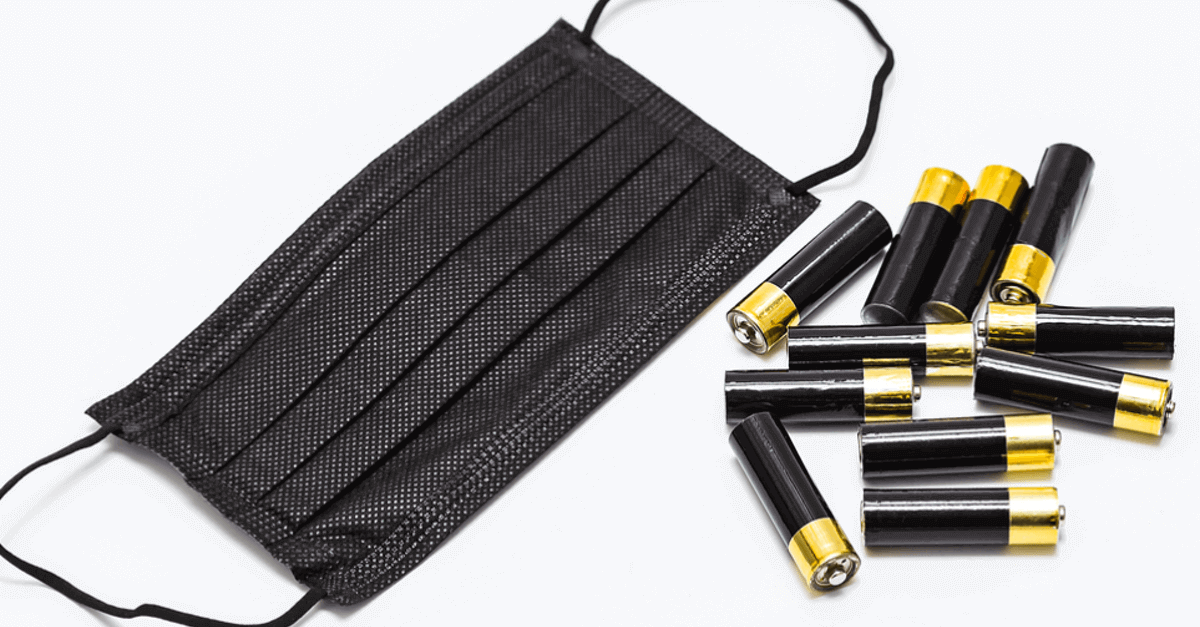New technology to convert tons of used masks into batteries

Researchers from the National University of Science and Technology (MISIS), together with colleagues from the United States and Mexico, have developed a new technology that allows low-cost batteries to be produced from medical waste.
People outside of science sometimes find it hard to believe what science can achieve and the news we are talking about on this occasion may be a good example of it.
But it is real, since the study published in the Journal of Energy Storage certifies it. And it is that Russian scientists from the National University of Science and Technology (MISIS) , in collaboration with a group of American and Mexican colleagues, have found a way to take advantage of used masks and other medical waste to create low-cost batteries .
urgent need to recycle
As a result of the coronavirus pandemic, 130 billion masks are consumed every month , researchers report, posing an urgent need to recycle such a volume of waste.
In addition, there is the circumstance that, when burned, they emit toxic gases , so this need is also an environmental problem to consider.
Graphene saturation is enough to give them unique properties
With this new technology developed by MISIS scientists, the door is opened to the production of thin, flexible and low-cost batteries from used masks, but also from medication blisters, with only the acquisition of graphene being necessary to complete the process.
How a battery is made from used masks
The manufacturing process of batteries made from medical waste such as masks is as follows:
“To create a supercapacitor-type battery, the masks are first disinfected with ultrasound, then dipped in ‘ink’ made of graphene , which saturates the mask,” explains Professor Anvar Zakhidov, scientific director of the Flexible Photovoltaic Devices infrastructure project, high-performance hybrid perovskite-based cells in NUST MISiS.
“The material is then put under pressure and heated to 140°C (conventional supercapacitor batteries require very high temperatures for pyrolysis-carbonation, up to 1000-1300°C, while the new technology reduces energy consumption by a factor of 10).
“Next, a spacer (also made of mask material) with insulating properties is placed between the two electrodes made of the new material,” he continues.
“This material is saturated with a special electrolyte, and then a protective shell is created from the material of medical blister packs (such as paracetamol),” he concludes.
Methodology.
To create a supercapacitor-type battery, the following algorithm is used: masks are first disinfected with ultrasound, then dipped in graphene “ink,” which saturates the mask.
The material is then pressed under pressure and heated to 140°C (conventional supercapacitor batteries require very high temperatures for pyrolysis-carbonation, up to 1000-1300°C, while new technology reduces energy consumption by a factor of 10).
A separator (also made of mask material) with insulating properties is then placed between the two electrodes of the new material. It is saturated with a special electrolyte, and then a protective shell is created from medical blister pack material (such as paracetamol).
Compared with traditional batteries, the new batteries have a high density of stored energy and electrical capacity.
Previously, pellet batteries created with similar technology had a capacity of 10 watt-hours per 1 kg, but NUST MISIS scientists and their foreign colleagues have managed to reach 98 watt-hours/kg.
When the scientists decided to add CaCo oxide-type inorganic perovskite nanoparticles to the electrodes obtained from the masks, the energy capacity of the batteries increased even more (208 watt-hours/kg).
They have achieved a high electrical capacity of 1706 farads per gram (this is significantly higher compared to the capacity of the best carbonized electrodes without the addition of graphene (1000 farads per gram).
Advantages of MISIS batteries
Compared to traditional accumulators, the new batteries have a high density of stored energy and electrical capacity,” they say. Previously, pellet batteries created with similar technology had a capacity of 10 Wh/kg, but NUST MISIS scientists and their foreign colleagues have managed to reach 98 Wh/kg .
“When the scientists decided to add CaCo oxide-type inorganic perovskite nanoparticles to the electrodes obtained from the masks, the energy capacity of the batteries increased even more (208 Wh/kg),” reports MISIS. “They have achieved a high electrical capacity of 1,706 farads/g (this is significantly higher compared to the capacity of the best carbonized electrodes without the addition of graphene (1,000 farads/g).”
Also read:Perovskite: the material destined to revolutionize solar energy
Scientists have tried before to use various porous natural materials and waste products to make electrodes for supercapacitors . These included coconut husks, rice husks, and recently even newspaper scraps, car tire scraps, and others.
However, working with these materials always required high-temperature annealing (carbonization) in special furnaces. The masks turned out to be an easier and cheaper material to process , since the saturation of graphene is enough to give them unique properties.
In the future, the MISIS scientific team plans to apply the new technology to the production of batteries for electric cars , solar power plants, and other applications.






